Python 官方文档:入门教程 => 点击学习
目录springDataJPA映射自定义实体类JPA配置类实体映射示例Spring Data JPA映射自定义实体类 这个问题困扰了我2天=-=,好像也能使用 jpql解决 先说下自
这个问题困扰了我2天=-=,好像也能使用 jpql解决
sql很简单:【如果需要分页,需要自己手动分页,因为你使用分页工具他第一页查询不会查询rownum,第二页查询就会查询rownum,然而这个返回的List<Object[]>中的参数必须要和实体类中一一对应,所以这就有一个不可控制的属性rownum,所以我们不能使用Pageable入参接口了,需要自定义pageSize pageNum参数】
SELECT
t.SQL_ID AS SQL的ID,
t.SQL_TEXT AS SQL语句,
t.HASH_VALUE AS 完整SQL哈希值,
t.ELAPSED_TIME AS 解析执行总共时间微秒,
t.EXECUTioNS AS 执行总共次数,
t.LAST_ACTIVE_TIME AS 执行最后时间,
t.CPU_TIME AS CPU执行时间微秒
FROM
v$sqlarea t
WHERE
t.PARSING_SCHEMA_NAME IN ( 'C##DBAAS' )
AND t.EXECUTIONS > 10
AND t.LAST_ACTIVE_TIME > TO_DATE('0001-01-01 01:01:01', 'yyyy-MM-dd hh24:mi:ss')
AND t.ELAPSED_TIME > 0
AND t.CPU_TIME > 0
ORDER BY
t.EXECUTIONS DESC;但是我用的是Spring Data JPA。。。。这个网上说不能将查询结果自动映射到自定义的实体类。。。。这就比较蛋疼了,在网上就找了个轮子。先上一下自己的Dao层,查出来的是集合数组,所以使用List< Object [ ] >接收【我将sql简化了一下,主要先测试能不能成功】
@Query(value="SELECT\r\n" +
" t.SQL_ID,\r\n" +
" t.ELAPSED_TIME,\r\n" +
" t.EXECUTIONS,\r\n" +
" t.LAST_ACTIVE_TIME, \r\n" +
" t.CPU_TIME \r\n" +
"FROM\r\n" +
" v$sqlarea t \r\n" +
"WHERE\r\n" +
" t.PARSING_SCHEMA_NAME IN ( 'C##DBAAS' ) AND t.EXECUTIONS > 100 \r\n" +
"ORDER BY\r\n" +
" t.EXECUTIONS DESC",nativeQuery=true)
public List<Object[]> findTopSQLS4();
然后就是实体类了:注意实体类中 必须包含构造函数,而且构造函数中的参数必须和你SQL中 查询的参数 顺序保持一致
package com.befery.oams.entity;
import java.io.Serializable;
import java.math.BigInteger;
import java.security.Timestamp;
import java.util.Date;
import javax.persistence.Column;
import javax.persistence.Entity;
import javax.persistence.Id;
import javax.persistence.Table;
@Entity
@Table(name = "v$sqlarea")
public class V$sqlarea implements Serializable {
@Id
private String sqlId;
private Number elapsedTime; // 解析+执行sql 总时间 微秒
private Number executions; // 执行次数
private Date lastActiveTime;
private Number cpuTime;
public String getSqlId() {
return sqlId;
}
public void setSqlId(String sqlId) {
this.sqlId = sqlId;
}
public Number getElapsedTime() {
return elapsedTime;
}
public void setElapsedTime(Number elapsedTime) {
this.elapsedTime = elapsedTime;
}
public Number getExecutions() {
return executions;
}
public void setExecutions(Number executions) {
this.executions = executions;
}
public Date getLastActiveTime() {
return lastActiveTime;
}
public void setLastActiveTime(Date lastActiveTime) {
this.lastActiveTime = lastActiveTime;
}
public Number getcpuTime() {
return cpuTime;
}
public void setCpuTime(Number cpuTime) {
this.cpuTime = cpuTime;
}
public V$sqlarea() {
}
public V$sqlarea(String sqlId, Number elapsedTime, Number executions, Date lastActiveTime,Number cpuTime) {
this.sqlId = sqlId;
this.elapsedTime = elapsedTime;
this.executions = executions;
this.lastActiveTime = lastActiveTime;
this.cpuTime = cpuTime;
}
}然后就是网上的轮子了
package com.befery.oams.util;
import org.slf4j.Logger;
import org.slf4j.LoggerFactory;
import java.lang.reflect.Constructor;
import java.lang.reflect.Field;
import java.lang.reflect.Method;
import java.util.ArrayList;
import java.util.HashMap;
import java.util.List;
import java.util.Map;
public class EntityUtils {
private static Logger logger = LoggerFactory.getLogger(EntityUtils.class);
public static <T> List<T> castEntity(List<Object[]> list, Class<T> clazz, Object model) {
List<T> returnList = new ArrayList<T>();
if (list.isEmpty()) {
return returnList;
}
//获取每个数组集合的元素个数
Object[] co = list.get(0);
//获取当前实体类的属性名、属性值、属性类别
List<Map> attributeInfoList = getFiledsInfo(model);
//创建属性类别数组
Class[] c2 = new Class[attributeInfoList.size()];
//如果数组集合元素个数与实体类属性个数不一致则发生错误
if (attributeInfoList.size() != co.length) {
return returnList;
}
//确定构造方法
for (int i = 0; i < attributeInfoList.size(); i++) {
c2[i] = (Class) attributeInfoList.get(i).get("type");
}
try {
for (Object[] o : list) {
Constructor<T> constructor = clazz.getConstructor(c2);
returnList.add(constructor.newInstance(o));
}
} catch (Exception ex) {
logger.error("实体数据转化为实体类发生异常:异常信息:{}", ex.getMessage());
return returnList;
}
return returnList;
}
private static Object getFieldValueByName(String fieldName, Object modle) {
try {
String firstLetter = fieldName.substring(0, 1).toUpperCase();
String getter = "get" + firstLetter + fieldName.substring(1);
Method method = modle.getClass().getMethod(getter, new Class[]{});
Object value = method.invoke(modle, new Object[]{});
return value;
} catch (Exception e) {
return null;
}
}
private static List<Map> getFiledsInfo(Object model) {
Field[] fields = model.getClass().getDeclaredFields();
List<Map> list = new ArrayList(fields.length);
Map infoMap = null;
for (int i = 0; i < fields.length; i++) {
infoMap = new HashMap(3);
infoMap.put("type", fields[i].getType());
infoMap.put("name", fields[i].getName());
infoMap.put("value", getFieldValueByName(fields[i].getName(), model));
list.add(infoMap);
}
return list;
}
}最后的操作,调用 castEntity() 方法:
@GetMapping(value = "/list")
@ResponseBody
public List<V$sqlarea> selectTopSQLUntreated() {
System.out.println("============================TOPSQL START=================================");
List<Object[]> list = v$sqlareaDao.findTopSQLS4();
List<V$sqlarea> list1 =EntityUtils.castEntity(list, V$sqlarea.class,new V$sqlarea());
System.out.println("============================TOPSQL END=================================");
return list1;
}看一下日志的输出
============================TOPSQL START=================================
Hibernate:
SELECT
t.SQL_ID,
t.ELAPSED_TIME,
t.EXECUTIONS,
t.LAST_ACTIVE_TIME,
t.CPU_TIME
FROM
v$sqlarea t
WHERE
t.PARSING_SCHEMA_NAME IN (
'C##DBAAS'
)
AND t.EXECUTIONS > 100
ORDER BY
t.EXECUTIONS DESC
============================TOPSQL END=================================
2019-03-12 18:06:57.108 INFO 21076 --- [NIO-8081-exec-7] com.befery.oams.config.LogAspectConfig : --------------返回内容----------------
2019-03-12 18:06:57.114 INFO 21076 --- [nio-8081-exec-7] com.befery.oams.config.LogAspectConfig : Response内容:[{"cpuTime":84731,"elapsedTime":183491,"executions":348,"lastActiveTime":1552385204000,"sqlId":"f05fn7j6rbcsj"},{"cpuTime":17827,"elapsedTime":33036,"executions":212,"lastActiveTime":1552385203000,"sqlId":"avc1jqzz04wpr"},{"cpuTime":9054,"elapsedTime":23874,"executions":174,"lastActiveTime":1552385204000,"sqlId":"b4xr1nw5vtk2v"},{"cpuTime":102017,"elapsedTime":97842,"executions":153,"lastActiveTime":1552313331000,"sqlId":"711b9thj3s4ug"},{"cpuTime":89011,"elapsedTime":90341,"executions":153,"lastActiveTime":1552313331000,"sqlId":"grqh1qs9ajypn"},{"cpuTime":58984,"elapsedTime":81214,"executions":135,"lastActiveTime":1552385214000,"sqlId":"d442vk7001fvw"},{"cpuTime":17260604818,"elapsedTime":41375561059,"executions":122,"lastActiveTime":1552297847000,"sqlId":"170am4cyckruf"},{"cpuTime":13194,"elapsedTime":31267,"executions":108,"lastActiveTime":1552383540000,"sqlId":"9q00dg3n0748y"}]
2019-03-12 18:06:57.114 INFO 21076 --- [nio-8081-exec-7] com.befery.oams.config.LogAspectConfig : --------------返回内容----------------
A: 两张表示例
@Entity
@Table(name="apo_config")
public class SiteConfig implements Serializable {
@Id
@GeneratedValue(strategy = GenerationType.IDENTITY)
private Long ID;
private String caption;
@ElementCollection(fetch = FetchType.LAZY)
@MapKeyColumn(name="name")
@Column(name="value")
@CollectionTable(name="apo_config_attributes", joinColumns=@JoinColumn(name="ca_id"))
private Map<String, String> attributes = new HashMap<String, String>();
//GET/SET
}测试代码
@Test
public void test(){
SiteConfig sc=new SiteConfig();
sc.setID(1L);
sc.setCaption("全局配置");
Map<String, String> data=new HashMap<>();
data.put("site", "csdn.net");
data.put("account", "xiaofanku");
sc.setAttributes(data);
siteConfigDao.save(sc);
}
@Test
public void getConfig(){
SiteConfig config=siteConfigDao.findOne(1L);
assertEquals(config.getAttributes().get("site"), "csdn.net");
}apo_config:表结构
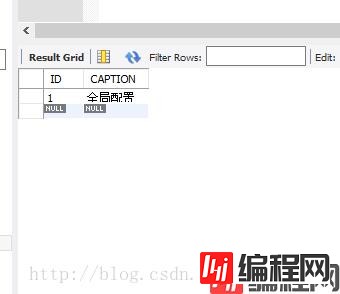
apo_config_attributes:表结构
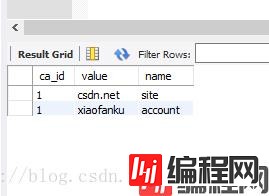
B: 三张表示例
@Entity
@Table(name="apo_config")
public class SiteConfig implements Serializable {
@Id
@GeneratedValue(strategy = GenerationType.IDENTITY)
private Long ID;
private String caption;
@OneToMany(cascade=CascadeType.ALL, orphanRemoval = true)
@MapKey(name="name")
@JoinTable(name = "apo_config_attributes")
private Map<String, ConfigAttribute> attributes=new HashMap<>();
//GET/SET
}
@Entity
@Table(name="apo_attributes")
public class ConfigAttribute implements Serializable {
@Id
@GeneratedValue(strategy = GenerationType.IDENTITY)
private Long ID;
@Column(name="name")
private String name;
private String value;
//GET/SET
}测试代码
@Test @Ignore
public void test(){
SiteConfig sc=new SiteConfig();
sc.setID(1L);
sc.setCaption("全局配置");
Map<String, ConfigAttribute> data=new HashMap<>();
ConfigAttribute ca1=new ConfigAttribute();
ca1.setName("site");ca1.setValue("csdn.net");
data.put("site", ca1);
ConfigAttribute ca2=new ConfigAttribute();
ca2.setName("account");ca2.setValue("xiaofanku");
data.put("account", ca2);
sc.setAttributes(data);
siteConfigDao.save(sc);
}
@Test @Ignore
public void getConfig(){
SiteConfig config=siteConfigDao.findOne(1L);
assertEquals(config.getAttributes().get("site").getValue(), "csdn.net");
}apo_config:表结构
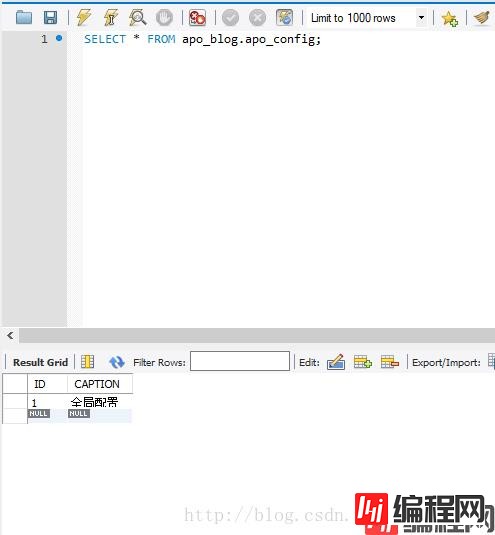
apo_attributes:表结构
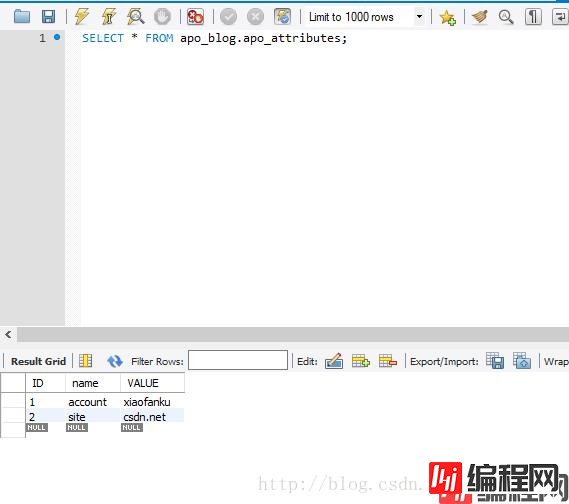
apo_config_attributes:中间表结构
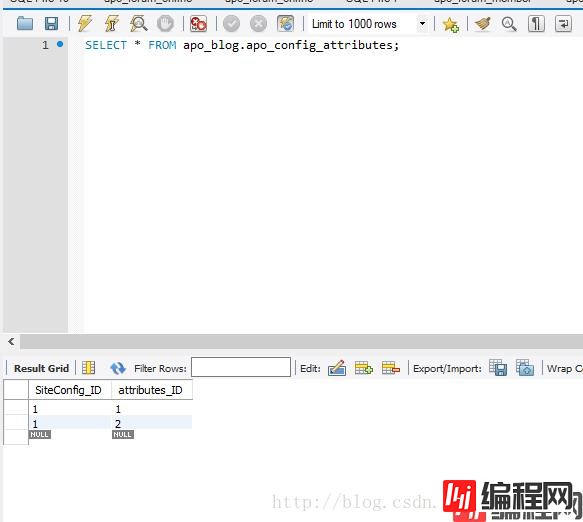
C: 使用ASF Commons BeanUtils来构造一个Dynamic Class
import java.util.ArrayList;
import java.util.List;
import java.util.Map;
import java.util.Objects;
import java.util.Set;
import org.apache.commons.beanutils.BasicDynaClass;
import org.apache.commons.beanutils.ConvertUtils;
import org.apache.commons.beanutils.DynaBean;
import org.apache.commons.beanutils.DynaProperty;
public class DynamicClass{
private final DynaBean config;
public DynamicClass(Map<String,String> attributeMeta) throws IllegalAccessException, InstantiationException, ClassNotFoundException{
DynaProperty[] props=covert(attributeMeta).toArray(new DynaProperty[]{});
BasicDynaClass dynaClass = new BasicDynaClass("CustomConfig", null, props);
this.config = dynaClass.newInstance();
}
public DynamicClass(Set<Attribute> attributes) throws ClassNotFoundException, IllegalAccessException, InstantiationException{
DynaProperty[] props=covert(attributes).toArray(new DynaProperty[]{});
BasicDynaClass dynaClass = new BasicDynaClass("CustomConfig", null, props);
this.config = dynaClass.newInstance();
load(attributes);
}
public Object getValue(String attributeName){
return config.get(attributeName);
}
public <T> T getValue(String attributeName, Class<T> classType) throws java.lang.ClassCastException{
return (T)getValue(attributeName);
}
public void setValue(String attributeName, String attributeValue){
DynaProperty dp = config.getDynaClass().getDynaProperty(attributeName);
config.set(attributeName, ConvertUtils.convert(attributeValue, dp.getType()));
}
public void setValue(Attribute attribute) throws ClassNotFoundException {
config.set(attribute.getName(), ConvertUtils.convert(attribute.getValue(), Class.forName(attribute.getClassName())));
}
private void load(Set<Attribute> attributes){
for(Attribute attr : attributes){
try{
config.set(attr.getName(), ConvertUtils.convert(attr.getValue(), Class.forName(attr.getClassName())));
}catch(ClassNotFoundException e){
}
}
}
private List<DynaProperty> covert(Set<Attribute> attributes) throws ClassNotFoundException{
List<DynaProperty> attres=new ArrayList<>();
for(Attribute attr : attributes){
attres.add(new DynaProperty(attr.getName(), Class.forName(attr.getClassName())));
}
return attres;
}
private List<DynaProperty> covert(Map<String,String> attributeMeta) throws ClassNotFoundException{
List<DynaProperty> properties=new ArrayList<>();
Set<String> attrSet=attributeMeta.keySet();
for(String attrName : attrSet){
String className=attributeMeta.get(attrName);
properties.add(new DynaProperty(attrName, Class.forName(className)));
}
return properties;
}
public static enum Type{
BOOLEAN("java.lang.Boolean"),
INTEGER("java.lang.Integer"),
LONG("java.lang.Long"),
STRING("java.lang.String"),
CHAR("java.lang.Character"),
DOUBLE("java.lang.Double"),
FLOAT("java.lang.Float");
private final String name;
private Type(String className){
this.name=className;
}
public String getName() {
return name;
}
}
public static class Attribute{
//属性名,例:show
private final String name;
//属性名的值,例:"true"
private final String value;
//属性名的类型,例:java.lang.Boolean
private final String className;
public Attribute(String name, String value, String className) {
this.name = name;
this.value = value;
this.className = className;
}
public String getName() {
return name;
}
public String getValue() {
return value;
}
public String getClassName() {
return className;
}
@Override
public int hashCode() {
int hash = 5;
hash = 97 * hash + Objects.hashCode(this.name);
hash = 97 * hash + Objects.hashCode(this.className);
return hash;
}
@Override
public boolean equals(Object obj) {
if (this == obj) {
return true;
}
if (obj == null) {
return false;
}
if (getClass() != obj.getClass()) {
return false;
}
final Attribute other = (Attribute) obj;
if (!Objects.equals(this.name, other.name)) {
return false;
}
if (!Objects.equals(this.className, other.className)) {
return false;
}
return true;
}
}
}测试代码:
@Test
public void test(){
Set<Attribute> sas=new HashSet<>();
sas.add(new Attribute("loGo", "logo.png", DynamicClass.Type.STRING.getName()));
sas.add(new Attribute("pageSize", "50", DynamicClass.Type.INTEGER.getName()));
sas.add(new Attribute("shortcut", "true", DynamicClass.Type.BOOLEAN.getName()));
try{
DynamicClass dc=new DynamicClass(sas);
Integer ps = dc.getValue("pageSize", Integer.class);
System.out.println(ps);
dc.setValue("pageSize", "150");
System.out.println(dc.getValue("pageSize"));
}catch(Exception e){
e.printStackTrace();
}
}
@Test @Ignore
public void base() {
Map<String, String> am = new HashMap<>();
am.put("logo", DynamicClass.Type.STRING.getName());
am.put("pageSize", DynamicClass.Type.INTEGER.getName());
am.put("shortcut", DynamicClass.Type.BOOLEAN.getName());
try {
DynamicClass dc = new DynamicClass(am);
dc.setValue("pageSize", "150");
System.out.println(dc.getValue("pageSize"));
dc.setValue(new Attribute("shortcut", "true", DynamicClass.Type.BOOLEAN.getName()));
System.out.println(dc.getValue("shortcut"));
} catch (IllegalAccessException | InstantiationException | ClassNotFoundException e) {
// TODO Auto-generated catch block
e.printStackTrace();
}
}最后说明:
以上为个人经验,希望能给大家一个参考,也希望大家多多支持编程网。
--结束END--
本文标题: Spring Data JPA映射自定义实体类操作
本文链接: https://www.lsjlt.com/news/157982.html(转载时请注明来源链接)
有问题或投稿请发送至: 邮箱/279061341@qq.com QQ/279061341
下载Word文档到电脑,方便收藏和打印~
2024-03-01
2024-03-01
2024-03-01
2024-02-29
2024-02-29
2024-02-29
2024-02-29
2024-02-29
2024-02-29
2024-02-29
回答
回答
回答
回答
回答
回答
回答
回答
回答
回答
0